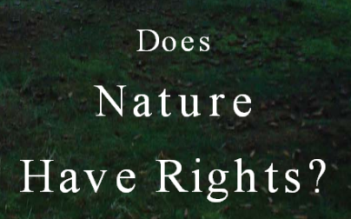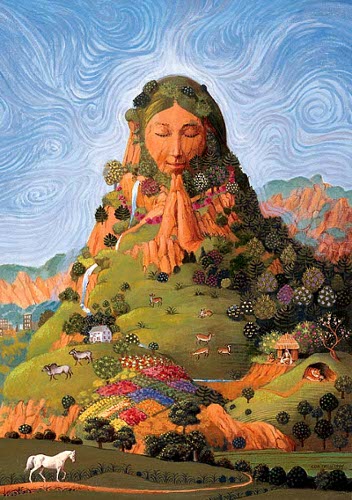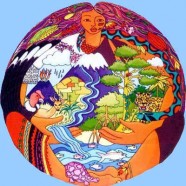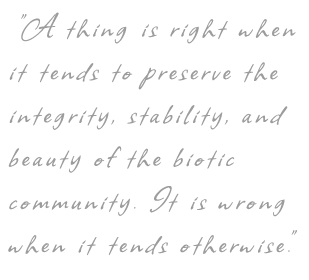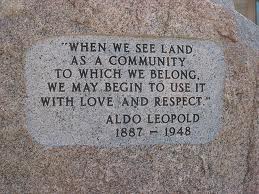Rights of Nature EarthLaw
"Rights of Nature" ○ Rights of Earth ○ Wikipedia
Global Alliance for the Rights of Nature
Rights of Nature Alliance holds Ecuador Summit
○ ○ ○ ○
Universal Declaration of the Rights of Mother Earth
Rights of Nature - Reading References
○ ○ ○ ○
○ ○ ○ ○
With the enactment of the its 2008 Constitution, Ecuador became the first country in the world to codify the Rights of Nature. Articles 10 and 71–74 of the Ecuadorian Constitution recognize the inalienable rights of ecosystems to exist and flourish, gives people the authority to petition on the behalf of ecosystems, and requires the government to remedy violations of these rights.
○ ○ ○ ○
"Ley de Derechos de La Madre Tierra"
Bolivia passes "Law of Mother Earth"
Public Law (Spanish - PDF)
October 19, 2014
The Law of Mother Earth ("Ley de Derechos de La Madre Tierra") holds the land as sacred and holds it as a living system with rights to be protected from exploitation. The law moves to create 11 distinguished rights for the environment. Bolivia's Plurinational Legislative Assembly passed the law in December 2010. The 10 article law derives from the first part of a longer bill, drafted and released by the 'Pact of Unity', November 2010.
In accordance with the philosophy of Pachamama, language in the law states the Earth "is sacred, fertile and the source of life that feeds and cares for all living beings in her womb. She is in permanent balance, harmony and communication with the cosmos. She is comprised of all ecosystems and living beings, and their self-organisation."
"It makes world history. Earth is the mother of all," said Vice-President Alvaro García Linera. "It establishes a new relationship between man and nature, the harmony of which must be preserved as a guarantee of its regeneration."
The law enumerates seven specific rights to which Mother Earth and her constituent life systems, including human communities, are entitled to:
- To life: It is the right to the maintenance of the integrity of life systems and natural processes which sustain them, as well as the capacities and conditions for their renewal
- To the Diversity of Life: It is the right to the preservation of the differentiation and variety of the beings that comprise Mother Earth, without being genetically altered, nor artificially modified in their structure, in such a manner that threatens their existence, functioning and future potential
- To water: It is the right of the preservation of the quality and composition of water to sustain life systems and their protection with regards to contamination, for renewal of the life of Mother Earth and all its components
- To clean air: It is the right of the preservation of the quality and composition of air to sustain life systems and their protection with regards to contamination, for renewal of the life of Mother Earth and all its components
- To equilibrium: It is the right to maintenance or restoration of the inter-relation, interdependence, ability to complement and functionality of the components of Mother Earth, in a balanced manner for the continuation of its cycles and the renewal of its vital processes
- To restoration: It is the right to the effective and opportune restoration of life systems affected by direct or indirect human activities
- To live free of contamination: It is the right for preservation of Mother Earth and any of its components with regards to toxic and radioactive waste generated by human activities.
○ ○
LA PAZ, May 19 2014 (IPS) - The law for the defence of Mother Earth passed by Bolivia a year and a half ago has not yet moved from good intentions to concrete action.
The Framework Law on Mother Earth and Integral Development for Living Well, in effect since Oct. 15, 2012, outlines principles for making a shift from classic development models to an integral model “in harmony and balance with nature, recovering and strengthening local and ancestral knowledge and wisdom.”
The law enshrines the legal rights of nature, condemns the treatment of Mother Earth’s environmental functions as merchandise rather than gifts from nature, and requires efforts to prevent and avoid damage to the environment, biodiversity, human health and intangible cultural heritage.
Chapter four of the law establishes an institutional framework on climate change, centred around an office called the “plurinational authority for Mother Earth”.
The director of that unit, Benecio Quispe, was appointed on Feb. 18 and is still in the process of naming a team and setting up an office.
The first activity organised by Quispe’s office was the First National Workshop on Climate Change Policies targeting social, academic, public and private organisations and representatives of the different levels of government: central, departmental (provincial) and municipal...
http://dotearth.blogs.nytimes.com/2008/09/29/ecuador-constitution-grants-nature-rights/
http://www.huffingtonpost.com/robert-koehler/the-sacred-and-the-dead_b_855272.html
http://www.huffingtonpost.com/robert-koehler/walk-softly_b_4824030.html
http://www.theguardian.com/environment/2011/apr/10/bolivia-enshrines-natural-worlds-rights
http://www.gaiafoundation.org/earth-law-precedents
○ ○ ○ ○
On Mother Earth Day 2013, UN Member States urged to promote harmony with nature
○ ○ ○ ○
News
A River in New Zealand Gets a Legal Voice
More
Whanganui River given rights as a legal identity
"Ko au te awa, Ko te awa ko au ~ I am the river and the river is me" expresses the special, spiritual relationship the iwi peoples (Maori) of New Zealand hold with the Whanganui river.
New Zealand river legal rights via Treehugger
○
Flowing rivers must be a human right, Stockholm Water Prize
○
September 2015
On the intersection of environment and faith, Dr. Mary Evelyn Tucker, co-director of the Yale Forum on Religion and Ecology, explains: “This encyclical, and its statement on the intrinsic rights of nature, is a breath of fresh air. Efforts to tackle climate change and other environmental issues have been driven by science, policy, economics, technology, and law. But science and policy alone are not going to solve these problems. We need these larger values–religion, art, and philosophy.”
http://www.greenpolicy360.net/w/Integral_Ecology
○ ○ ○ ○
Rights of Nature
Legal advocacy by the Community Environmental Legal Defense Fund
http://celdf.org/rights-of-nature-frequently-asked-questions
The Community Environmental Legal Defense Fund works with communities in the United States and in countries around the world on grassroots organizing, public education and outreach, research, and legislative drafting - assisting people, NGOs, elected representatives, and government officials to craft and adopt new laws that change the status of natural communities and ecosystems from being regarded as property under the law to being recognized as rights-bearing entities.
Through this work, the Legal Defense Fund has assisted more than three dozen communities in the U.S., and assisted the Constituent Assembly of Ecuador, to put in place a new paradigm to protect nature - a paradigm based on rights.
○
○
#LandEthic - #RightsofNature - #EarthLaw
○
